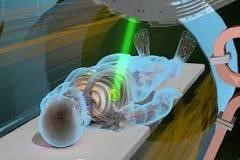A nurse is collecting data from a client who is 18 hr postpartum. The nurse notes that the client is in the "taking-in phase" of maternal adjustment. Which of the following manifestations should the nurse expect?
Tolerates physical discomforts
Performs self-care independently
Begins reconnecting with their partner
Is eager to review the birth experience
The Correct Answer is D
Nursing Test Bank
Naxlex Comprehensive Predictor Exams
Related Questions
Correct Answer is D
Explanation
Choice A Reason:
Limiting fluid intake to 750 mL per day is not recommended, as adequate hydration is essential for overall health. The client should maintain good hydration unless specifically advised otherwise by their healthcare provider.
Choice B Reason:
Cleansing the neck by rubbing with a washcloth may be too harsh for the irradiated skin. The skin in the radiation field can become sensitive and may require gentle cleansing with mild soap and patting dry, rather than rubbing.
Choice C Reason:
Eating three large meals each day may not be suitable for all clients undergoing radiation therapy, especially if they are experiencing side effects such as difficulty swallowing or changes in taste. Dietary recommendations should be individualized based on the client's specific needs and symptoms. Smaller, more frequent meals may be more manageable for some clients.
Choice D Reason:
Avoiding exposing the neck to the cold is correct. When providing instructions to a client undergoing radiation therapy to the neck, it's important to emphasize the need to protect the treated area from extreme temperature changes. Exposure to cold temperatures can cause vasoconstriction and potentially lead to tissue damage in the irradiated area. Therefore, advising the client to avoid exposing the neck to cold is a vital precaution.

Correct Answer is C
Explanation
c. Roasted salmon
The nurse should include roasted salmon on the tray for the client who follows a kosher diet.
Kosher dietary laws prohibit the consumption of shellfish such as clams and shrimp, as well as pork products like pulled pork sandwiches. Roasted salmon, on the other hand, is a permissible food item in a kosher diet.
It's important for the nurse to be aware of the client's dietary restrictions and preferences to ensure that they receive appropriate and culturally sensitive care.
Whether you are a student looking to ace your exams or a practicing nurse seeking to enhance your expertise , our nursing education contents will empower you with the confidence and competence to make a difference in the lives of patients and become a respected leader in the healthcare field.
Visit Naxlex, invest in your future and unlock endless possibilities with our unparalleled nursing education contents today
Report Wrong Answer on the Current Question
Do you disagree with the answer? If yes, what is your expected answer? Explain.
Kindly be descriptive with the issue you are facing.
